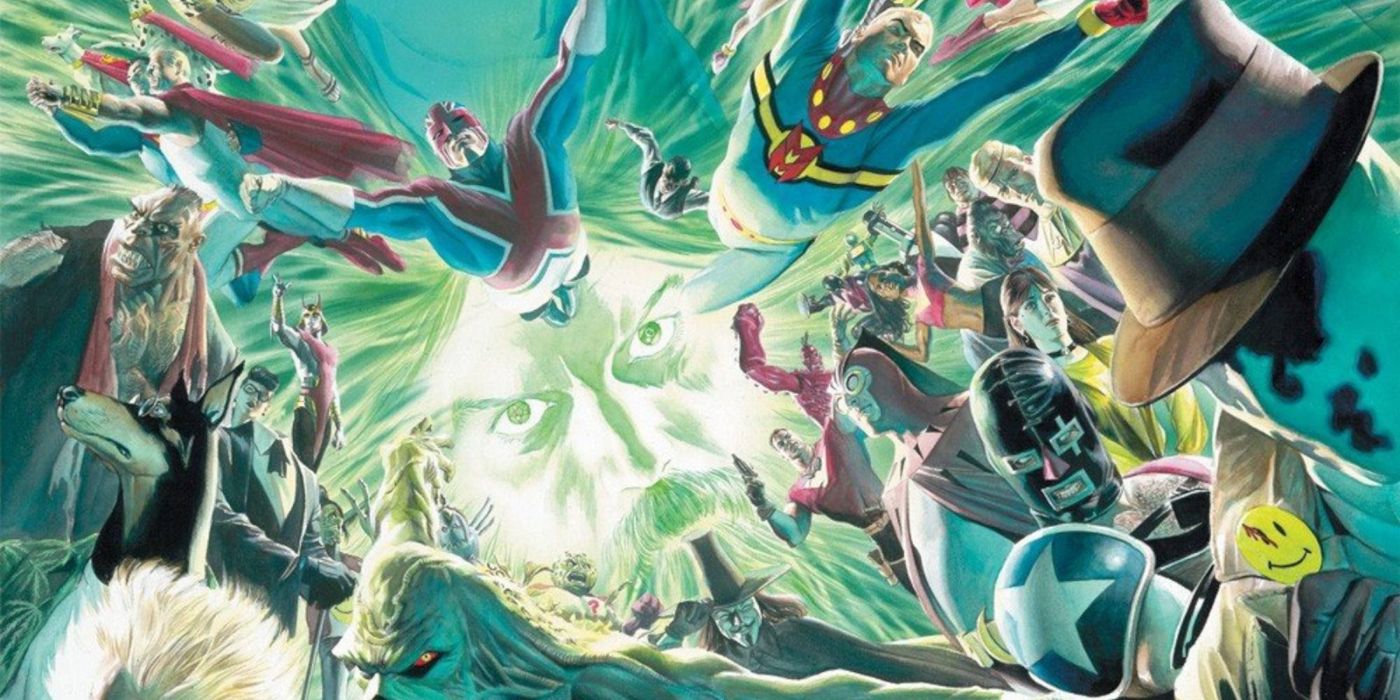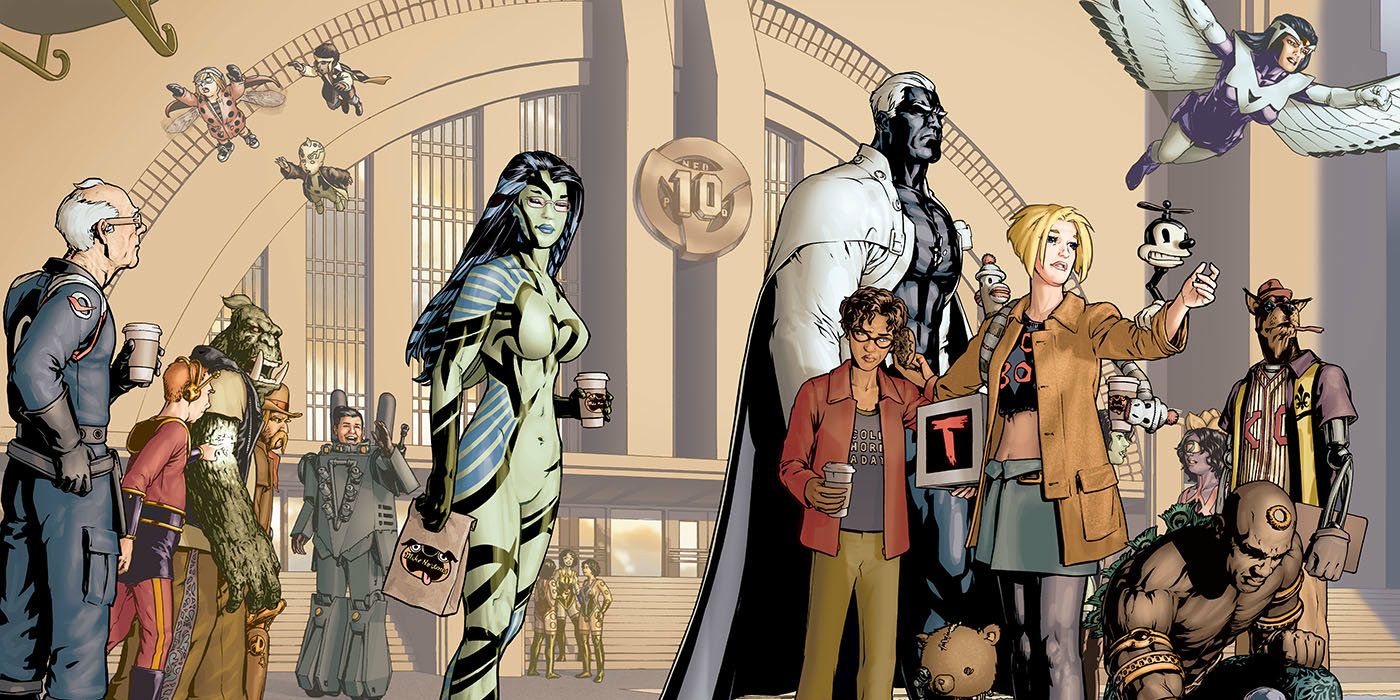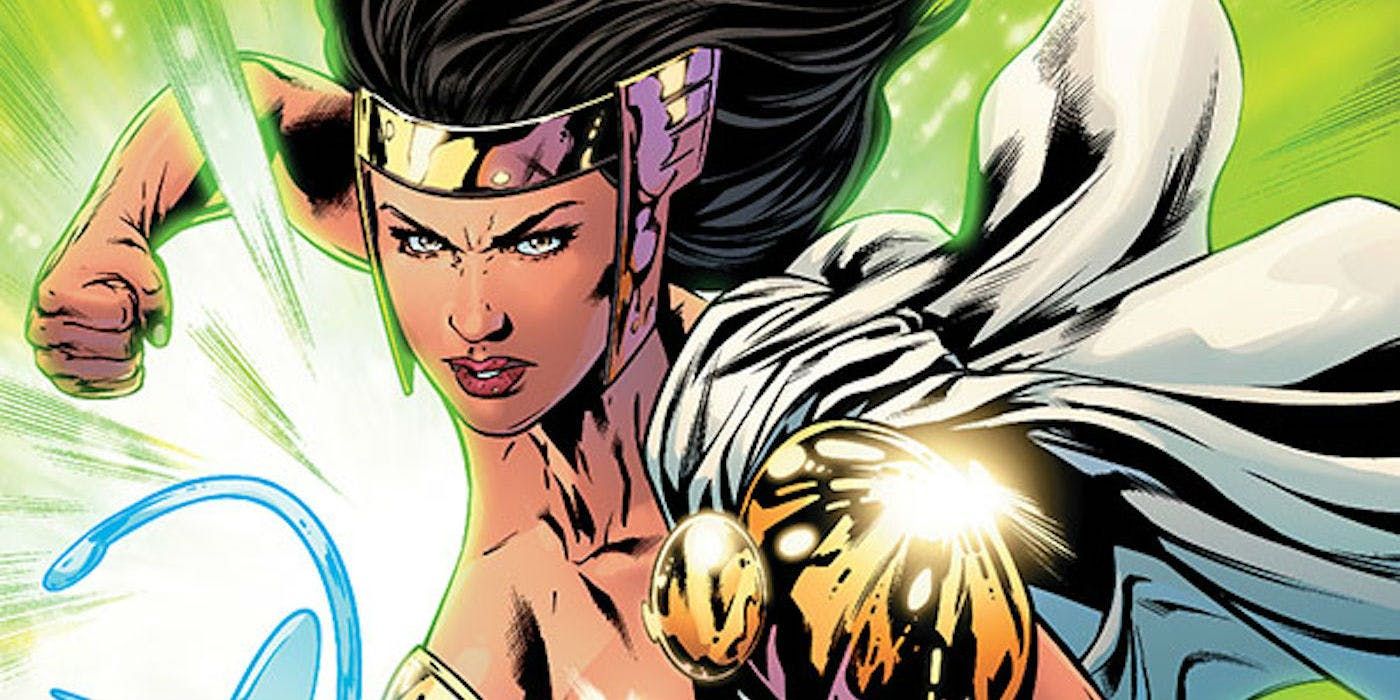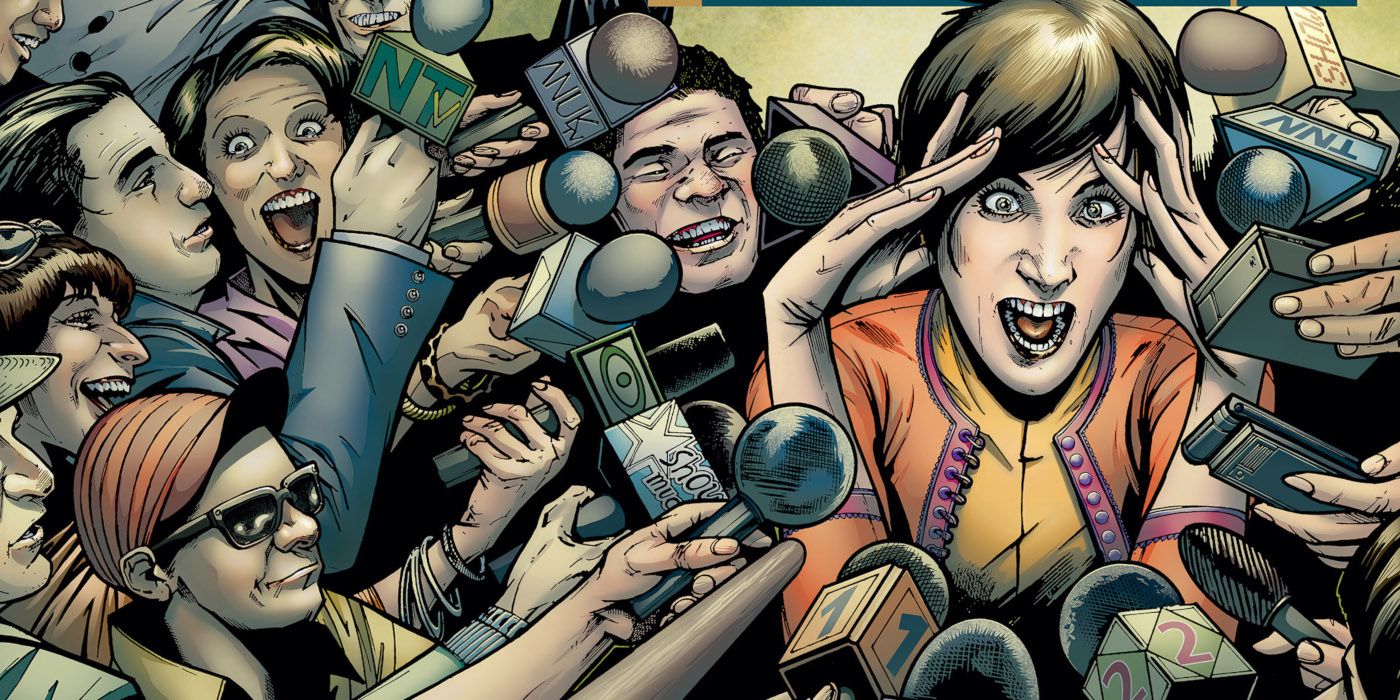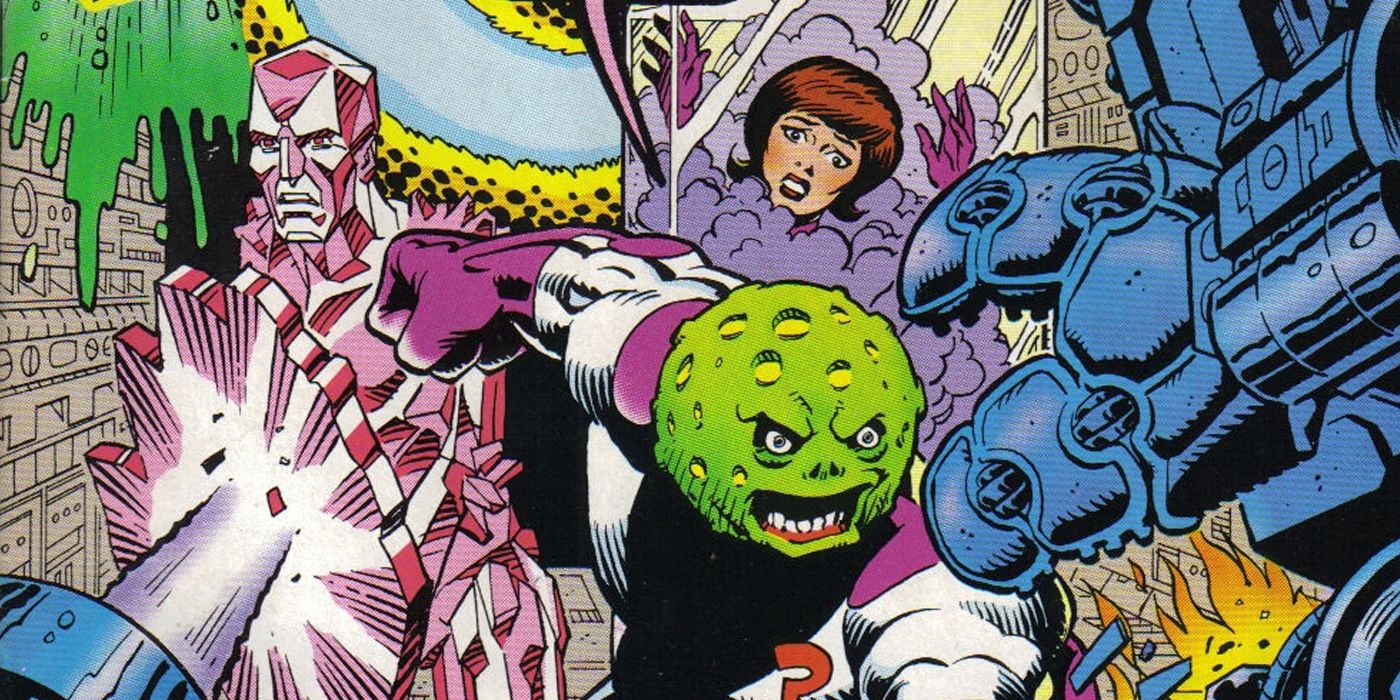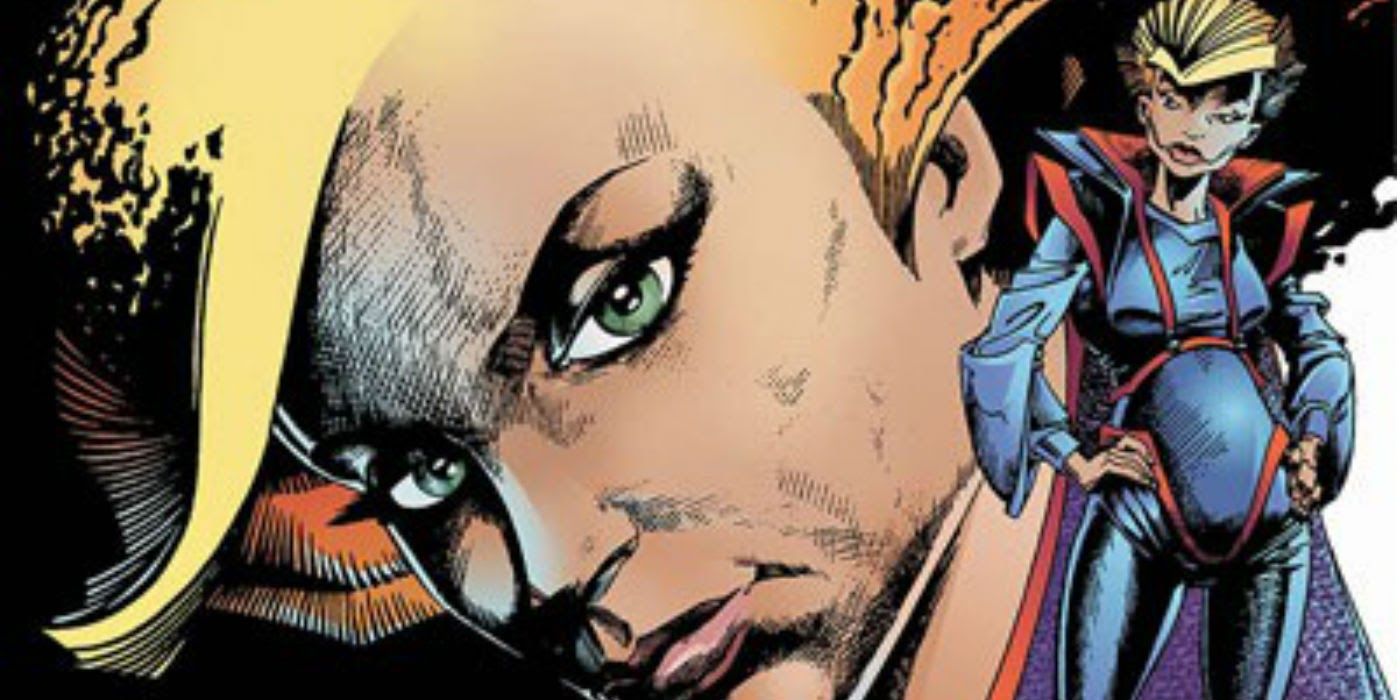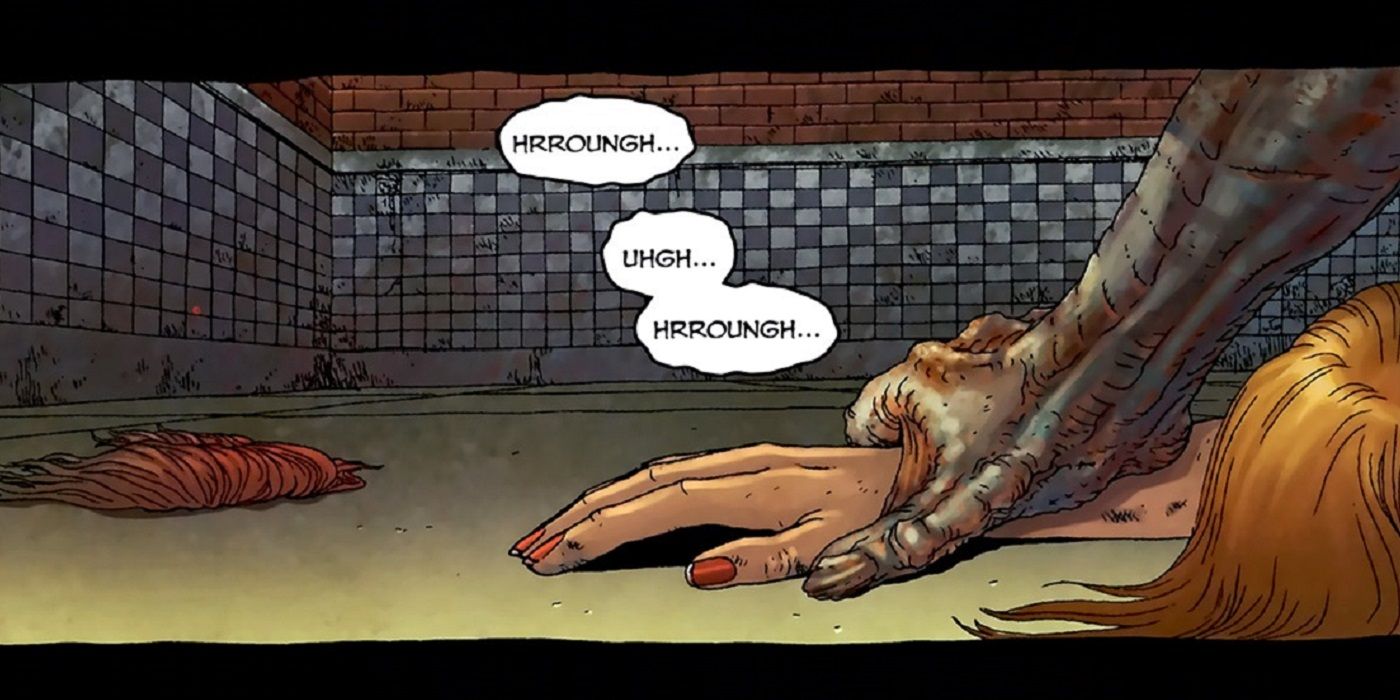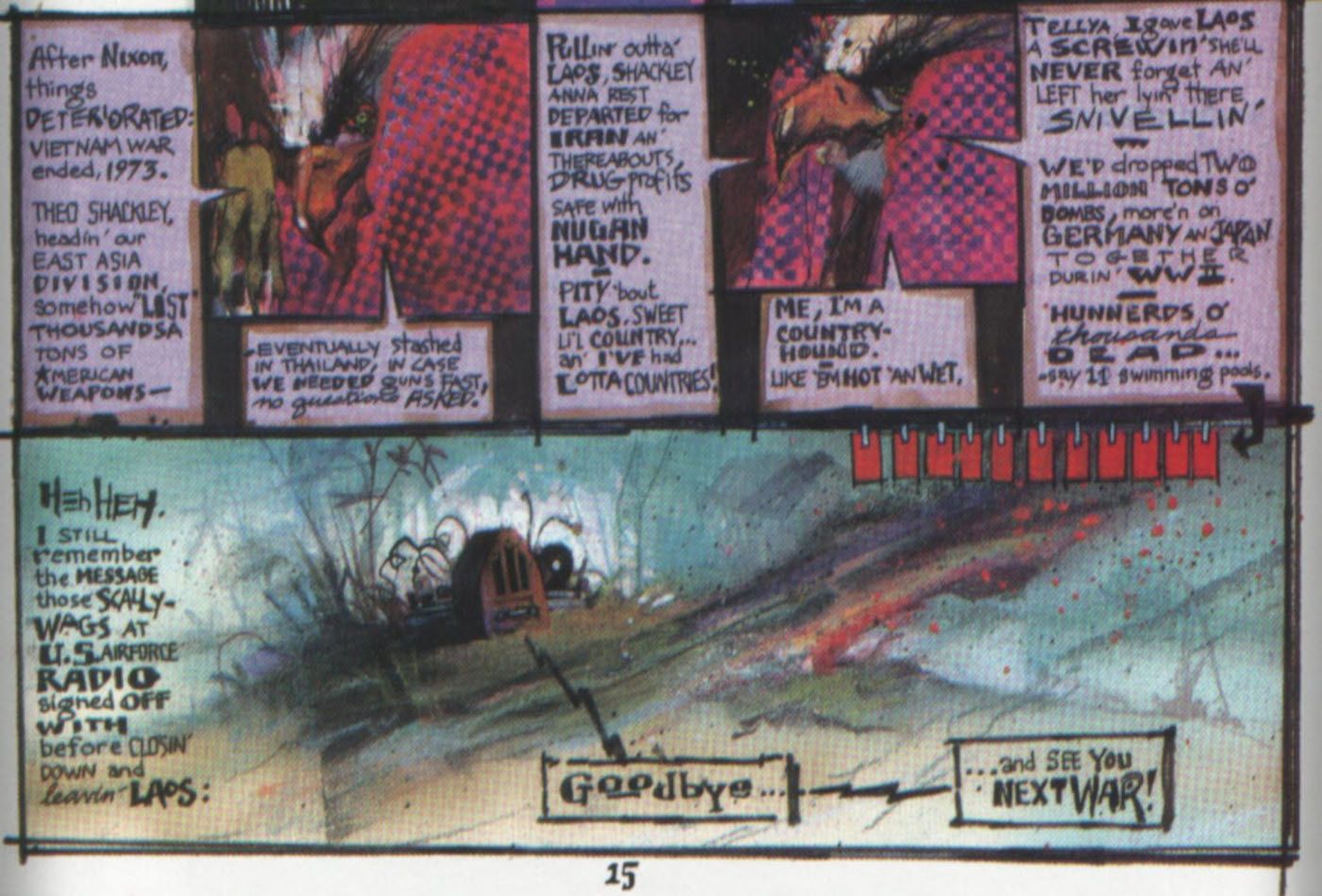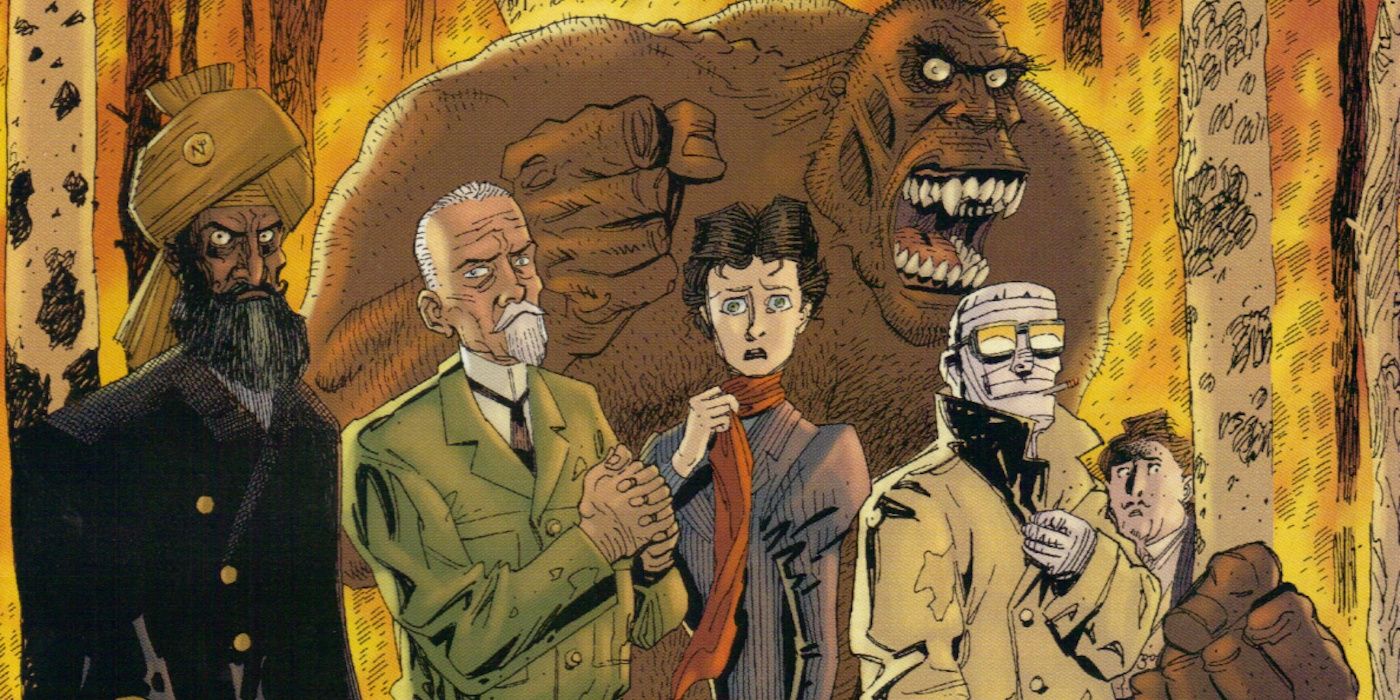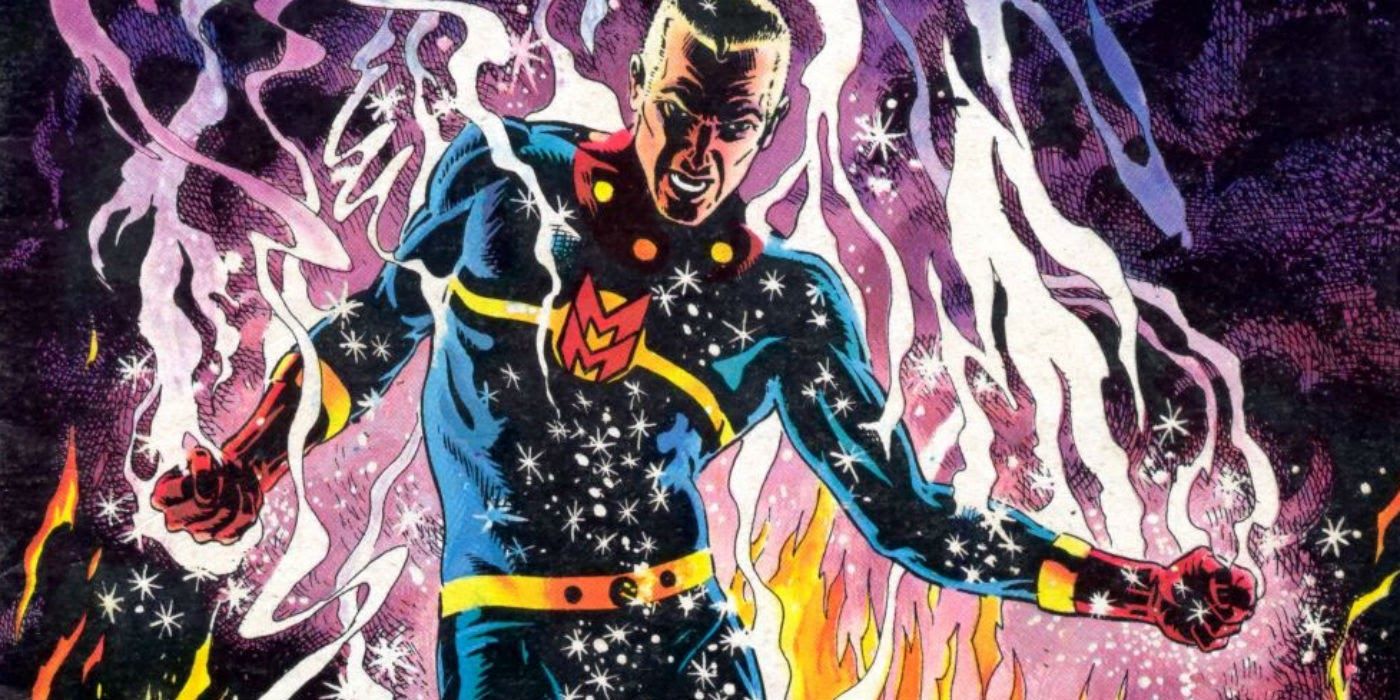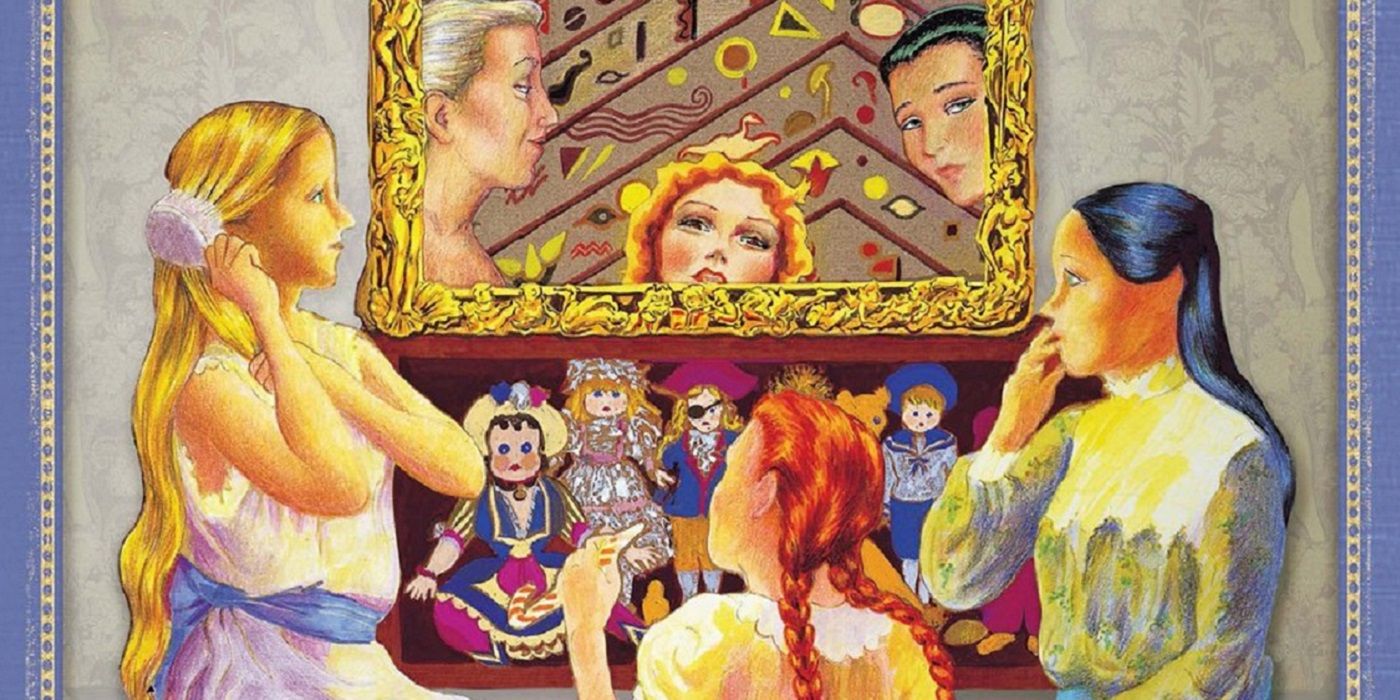Widely regarded as one of the greatest if not the greatest comic book scribes of all time, Alan Moore hasn’t had the best experiences when it comes to adaptations of his works. Not only has the legendary writer been vocal about his perceived mistreatment by the industry, but the quality of the adaptations themselves has been mixed at best. For every half-decent reimagining of a Moore-penned outing (Watchmen, V for Vendetta), there’s at least as many that are downright awful (From Hell, League of Extraordinary Gentlemen).
This is a real shame, as several of Moore’s works could serve as the basis for breathtakingly brilliant television and cinema. While Moore may have sworn off Hollywood forever, we’re still holding out hope for adaptations of at least 5 of his most impressive comic book efforts – although at the same time, there’re also 5 of his tales we’d be content to leave solely on the page!
10 Needs An Adaptation: Top 10
Top 10 revolves around the dedicated police officers of the 10th Precinct in Neopolis: a city where almost everyone has superpowers. It’s a high concept brimming with potential, and Moore and artists Gene Ha and Xander Cannon exploit it for all it’s worth, blending the standard police procedural with comic book storytelling conventions to dazzling effect.
Given the wealth of material here, we’d argue that Top 10 should be adapted as a big budget TV show. Basically, picture something with the production values of The Boys, only wildly more inventive and markedly less downbeat.
9 Should Never Be Made: Promethea
Arguably Moore’s most personal work, Promethea is a stunning exploration of his views on mysticism, spirituality and storytellin, disguised as a traditional superhero narrative. But while we love the book, we’d argue it’s almost unfilmable. Why? Because large stretches of Promethea are a talking heads-style lecture, where Moore expounds his beliefs to the reader through his characters.
Admittedly, Moore's thoughts and theories are engrossing, and JH William III’s breath-taking artwork and unmatched page layouts offset the story's didactic nature. Sure, you could conceivably pull off a similar trick on the screen by emulating Promethea’s mind-bending visuals. But as the Matrix sequels have shown, audiences tend to react negatively when a franchise over-emphasizes its philosophical aspects.
8 Needs An Adaptation: Fashion Beast
Fashion Beast holds the distinction of being the only potential adaptation on this list that could earn the greenlight from Alan Moore. After all, the story – a contemporary re-telling of Beauty and the Beast – was originally conceived as a screenplay, which Moore co-wrote in the mid-80s with Malcolm McLaren and Antony Johnston.
It stands to reason that the otherwise Hollywood-averse writer might actually be interested to see Fashion Beast brought to life as first intended. At the very least, Moore wouldn’t have to worry too much about the film version deviating too far from its source material – the only real criticism levelled at Fashion Beast is that it reads too much like a movie script!
7 Should Never Be Made: 1963
For a guy who helped usher in comics’ so-called “Dark Age," Alan Moore possesses a surprising appreciation for the more lighthearted stories of yesteryear. Nowhere is this more apparent than 1963, which serves as both a love letter to Marvel Comics’ early 1960s output, as well a mostly good-natured spoof of it. It’s a blast to read, and like Watchmen before it showcases Moore’s ability to create pastiche characters that feel wholly original and authentic, while artists Rick Veitch and Steve Bissette nail the retro aesthetic. But would it work on screen? We doubt it.
See, 1963 relies heavily on readers being intimately familiar with the tropes and stylistic quirks of Silver Age comic books – knowledge casual audiences wouldn’t have. What’s more, 1963’s effectiveness comes from Moore, Veitch and Bissette injecting modern day irony into their ostensibly old-school scripting and artwork, which would be difficult to replicate in live-action.
6 Needs An Adaptation: The Ballad Of Halo Jones
We’re going on a limb here and say that the world is more than ready for an adaptation of Moore and Ian Gibson’s The Ballad of Halo Jones. Not only does it have a relatable female protagonist in Ms. Jones, but TV production values have finally reached the point where realizing the comics’ vivid 50th Century setting wouldn’t pose any problems.
While this is almost certainly wishful thinking on our part, we also can’t help noting that a Halo Jones TV series would provide Moore with the opportunity to finally finish this story, since – like more than a few of his works – it remains unfinished. Would Moore actually be interested in participating in such a project? Probably not, but we can still dream.
5 Should Never Be Made: Neonomicon
Like fellow British superstar scribe Neil Gaiman, Alan Moore never shied away from the inherent connection between magic rituals and sex. For crying out loud, there’s even a whole chapter dedicated to explicitly (and we do mean “explicitly") addressing the topic in Promethea! But Moore outdoes himself in Neonomicon, which explores the sexual aspects of HP Lovecraft's Cthulhu Mythos.
With artist Jacen Burrows, Moore delivers a harrowing tale filled with graphic (and frankly, gross) depictions of consensual and non-consensual sex, including one protracted rape scene involving a fish monster. For this reason, Neonomicon isn’t something even the most ardent of Moore’s fans long to revisit – least of all as a live-action film.
4 Needs An Adaptation: Brought To Light
Brought to Light: Thirty Years of Drug Smuggling, Arms Deals, and Covert Action is a two-part anthology which offers a searing expose of American foreign policy over the years. Shadowplay: The Secret Team – the part penned by Moore, featuring typically bravura artwork by the inimitable Bill Sienkiewicz – is especially timely, as it documents the sordid global history of the CIA.
However, there are a few creative hurdles that would need to be cleared before Brought to Light could make the leap to the big or small screen. For one thing, the story’s framing device centers on a gigantic, anthropomorphized eagle drunkenly airing the CIA’s dirty laundry. But whatever route the filmmakers choose, the resulting adaptation is guaranteed to be mesmerising so long as they can stick the landing!
3 Should Never Be Made: League Of Extraordinary Gentlemen: Century
You can go right ahead and consider this entry a blanket veto of any further attempts to adapt The League of Extraordinary Gentlemen. The comic’s basic conceit – The Avengers, except the team roster is drawn from 19th Century literature – is simple enough, but Moore and artist Kevin O’Neill execute this underlying concept in such a clever and idiosyncratic way that the property is ultimately too niche and (frankly) too dang smart for studio executives to leave untouched.
While a TV series based on League of Extraordinary Gentlemen might work, we’d strongly advise against making one – especially given the headaches that adapting Century would cause. Not only does that volume nearly collapse under the weight of incorporating appearances by non-public domain characters, it also takes some decidedly mean-spirited shots at the Harry Potter franchise which could result in fan backlash – not to mention the odd lawsuit or two!
2 Needs An Adaptation: Miracleman
For our last mooted adaptation, we very nearly went with Tom Strong, Moore and artist Chris Sprouse’s homage to pulp heroes (Doc Savage, in particular). But the recent commercial if not critical success of Brightburn has us convinced that there’s still an appetite for darker takes on superhero mythmaking, which is why we’ve settled on Miracleman, instead.
Unlike 1963 – or Moore’s other reconstructionist masterpiece, Supreme – Miracleman relies less on the trappings of Silver Age comics to succeed. Rather, it uses these throwback elements to dive headlong into a meditation on the dehumanizing effects of god-like power which remains haunting even by modern standards, and would be dynamite material in the hands of talented filmmaker. Then there’s Miracleman’s antagonist, the ruthless psychopath (and fallen superhero) Kid Miracleman – a truly terrifying villain who would put other comic book blockbuster baddies to shame!
1 Should Never Be Made: Lost Girls
We'll be blunt, here: Lost Girls is porn. True, it’s the most high-brow erotica you’re ever likely to encounter. Yet even Moore and artist Melinda Gebbie themselves freely embrace this label for their work, having intentionally set out to use pornography as a vehicle to express ideas about – and challenge taboos around – sexuality.
So far, so good. Maybe you could adapt Lost Girls as an arthouse feature. It might even have some degree of mainstream appeal, thanks to its trio of heroines drawn from Alice’s Adventures in Wonderland, The Wonderful Wizard of Oz and Peter Pan. But toss in the controversial aspects of the book such as the accusations of sexualizing children, and it seems like translating Lost Girls into another medium would be more trouble than it’s worth.

